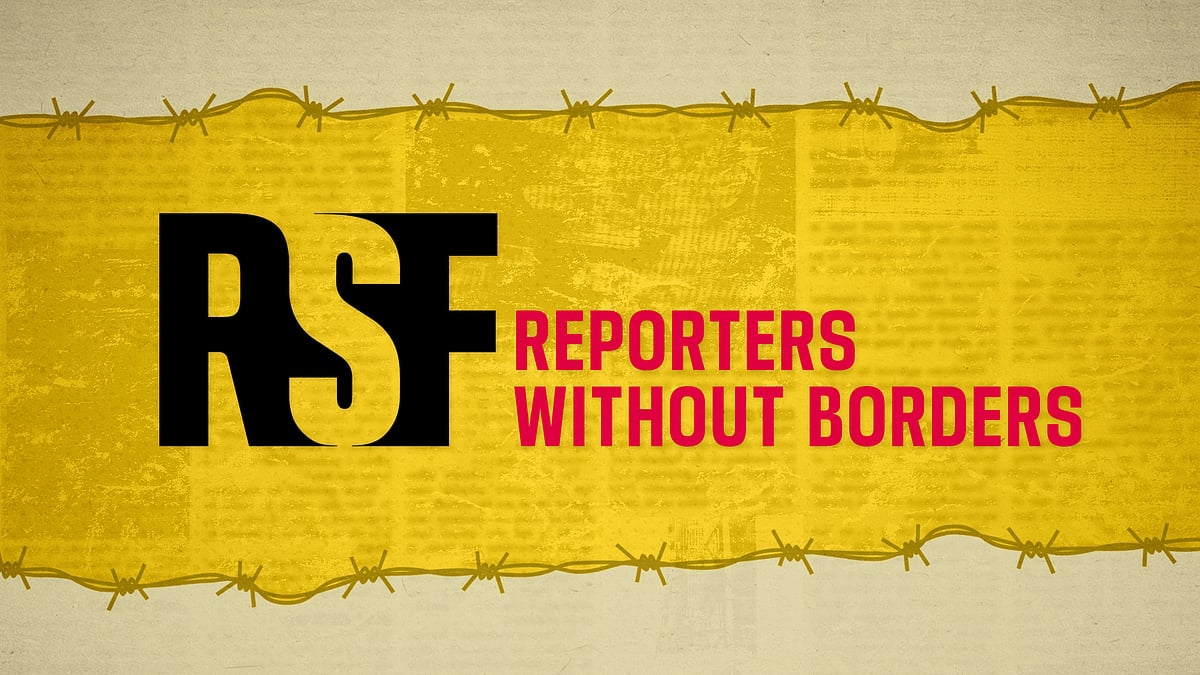‘Less jobs, dip in quality, lack of access’: What it means to be a photojournalist in India
At an exhibition in Delhi, photojournalists tell Newslaundry the story beyond their frames.
Remember the image of officials in Delhi spraying sanitisers at pedestrians in the national capital amid the Covid lockdown? While it became part of the reportage on the government's handling of the Covid crisis, the story of the pandemic's impact on the photojournalist found little media attention.
K Asif, 41, was working for India Today Group’s Mail Today, when he shot the picture in April 2020. Months later, Mail Today shut shop, referring to the pandemic in its announcement, and Asif found himself without a job, struggling to make ends meet.
“I had put myself at risk. I had to wear PPE kits, double masks and frequently sanitise my camera and equipment,” he said, referring to the picture that was among the 250 images on display at ‘The Big Picture’ exhibition – organised by the All India Working News Cameramen's Association between April 21 and May 2 at Delhi’s India International Centre.

“It was a hard time. But as a freelancer now, I earn more than what I did while working with an organisation,” Asif said. “The financial situation of photojournalists is still challenging. Even though they risk their lives to capture crucial images, they often don't receive the recognition or support they deserve from their organisations.”
It’s not just Asif. Photojournalism opportunities in mainstream newspapers and magazines have significantly dwindled, journalists present at the exhibition held at India International Centre told Newslaundry. Photojournalists hired by these media organisations are often paid a meagre salary, as a result of which many are now turning to freelance work.
And despite the increasing access to cameras, improved equipment and social media platforms and exhibitions to showcase their frames, veteran photographers feel the industry is on a decline.
"Photojournalism is dying,” said SN Sinha, president of WNCA, gazing at the photographs on display. “The emergence of phone cameras has allowed reporters to take on both jobs of writing and photographing. However, it is resulting in a significant decline in the number of published photographs. The quality of images has also been compromised, with people often resorting to using images from other publications, which in turn leaves the post of photojournalists vacant.”

Sinha, who began his career as a photojournalist in the 1970s, was with Hindustan Times till 2006. He said, “Although social media provides a platform for photographers, it is increasingly challenging to survive by just posting pictures online. The employment opportunities in this field are on a fast decline.”
Manish Sehrawat, another veteran photographer and the event’s organiser, said that even though photographers today have an incredible opportunity to showcase their work and reach audiences worldwide through technology, the space given to them by media houses, particularly newspapers, has shrunk.
“Only a few publications like Frontline magazine offer fixed columns for photo essays today,” said Sehrawat, who is also an assistant professor at Indian Institute of Photography.
Pooja Arya, a photo and video journalist with NDTV, whose photographs capturing an acid attack survivor were on display at the exhibition, said, “Photography is becoming more accessible. Great work is being done in photojournalism both in India and internationally.”

However, she echoed Sinha and Sehrawat’s views that photographers and videographers often do not receive the credit they deserve compared to TV anchors and reporters, while their work too is crucial and often timeless. “Certain images such as the iconic photo of a child's head buried in sand after the Bhopal gas tragedy by Raghu Rai will stay with people forever,” she said.
She also said there is a rise in AI-generated images, though she was uncertain about their potential impact on journalists.
V Rajagopal, a senior journalist who has captured personalities such as Mother Teresa, Rajiv Gandhi and Indira Gandhi, was also featured in the exhibition. “There are hardly any photojournalists in newspapers, unlike in the 1990s when I used to work.”

Recounting his experience as a political photojournalist, he said there were challenges of working with limited equipment, but “politicians then were more accessible and friendly, allowing for more intimate and candid moments to be captured on camera”.
Talking about work hazards, another journalist said, “There is always risk involved, but someone has to do it."
 World Press Freedom Index: India rank slides to 161, 11 spots behind Afghanistan
World Press Freedom Index: India rank slides to 161, 11 spots behind Afghanistan